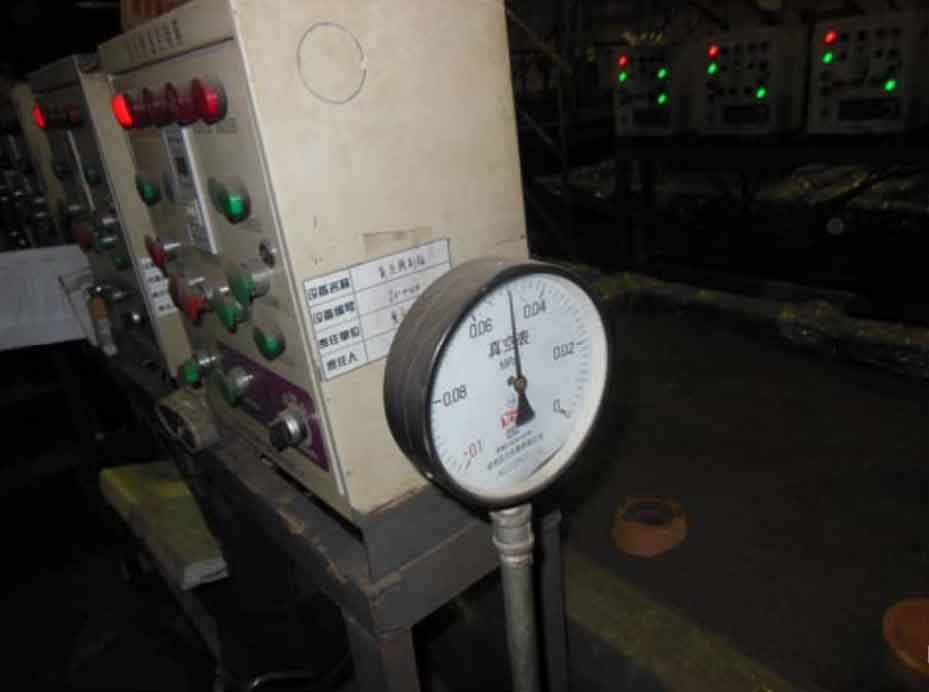The lost foam casting Pouring Scheme of ductile iron mainly includes pattern making, layout of ductile iron castings, design of pouring riser, determination of pouring parameters and so on.
1) pattern design and production: foam pattern includes ductile iron castings, runner and risers. The hollow runner and long fork foam shape is molded by the whole mold. After molding, the pattern needs to be dried and placed on the special rack. The shape of transverse runner and riser is relatively simple and made by manual cutting foam plate. After molding, the ductile iron castings, runner, risers and so on are bonded together with hot melt adhesive. In order to prevent deformation of the cluster in storage, transportation and sand filling, wooden reinforcement and foam reinforcement are used in the place of large span and easy deformation.
2) Nodular cast iron castings are produced in large quantities. According to the size of sandbox and nodular cast iron castings, it is proposed to adopt the layout of “one out of two” with 6 pieces in one box, 2 pieces in one group, 3 groups in one box. Vertical pouring is adopted to facilitate sand filling and compaction of internal step holes and vertical pits of nodular cast iron castings, and prevent box collapse and floating “core”.
3) At present, there is no final conclusion on the design of lost foam casting gating system. Generally speaking, there are two methods: theoretical method and empirical method. The theoretical method first calculates the minimum unit cross-sectional area of the gating system according to the hydraulic formula, which is used as the control interface, and then calculates the cross-sectional size of other components according to the appropriate proportion; The empirical method calculates the section size of each element according to the traditional sand mold casting gating system, which is generally increased by 15% ~ 20%, and finally obtains a reasonable gating system through continuous experimental improvement. The trial production process and optimization process of the long fork are designed by empirical method. The two trial production process schemes are based on the empirical design data of a factory’s long-term practice.
4) The design of feeding riser in lost foam casting is flexible, spherical, waist and square can be used, and the position of riser is relatively free. The riser of the long fork adopts a riser free design or a square riser which is easy to manufacture. The riser free scheme is adopted because the strength of the lost foam casting mold is better than that of the traditional sand mold, which can resist the expansion force released when the graphite ball precipitates. In turn, it puts pressure on the paste area of the ductile iron casting to promote feeding. At the same time, the riser free design can improve the yield of the ductile iron casting; When the square riser is used, the riser is placed near the large hot spot of nodular cast iron casting, which can not only achieve the purpose of feeding, but also prevent the riser from shrinking and reverse pumping of nodular cast iron casting.
5) The pouring parameters include the following contents: casting material: the casting material is QT600; Foam selects STMMA (copolymer) with low carbon content and low gas volume, and the foam density is 0.025g/cm ³; The dry sand material is dry quartz sand.
Pouring temperature: the temperature of lost foam casting of ductile iron is generally higher than that of the traditional sand mold. The temperature of molten metal after filling and degrading foam pattern is the same as that of the traditional sand mold, and is generally set at 1380 C ~1480 30~50. Because the long fork is produced in large quantities, multiple groups of nodular cast iron castings need to be poured in each package of molten metal. In order to avoid poor mold filling of nodular cast iron castings poured late due to low pouring temperature, 1480 ℃ is used as the pouring temperature.
Negative pressure condition: maintain a negative pressure of 0.05Mpa during mold filling, hold the pressure for 10 minutes after mold filling, and the pressure holding negative pressure is 0.025-0.04mpa. The negative pressure in the mold filling process mainly has two functions: one is to ensure the stability of dry sand mold and prevent box collapse; the other is to facilitate the elimination of pattern degradation products and mold filling; The function of keeping negative pressure during solidification is to increase the rigid strength of the mold, which is conducive to the self feeding of ductile iron parts and reduce or avoid the occurrence of shrinkage cavity and porosity defects.
Inoculation: inoculation in the bag is adopted, and the incubation time is 4min. The pouring time of each package is about 8min, so the maximum incubation time is about 12min.

